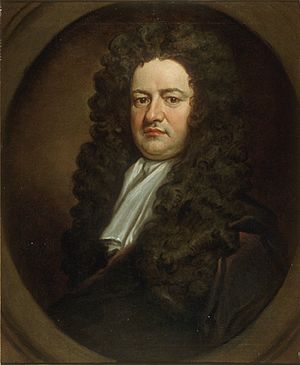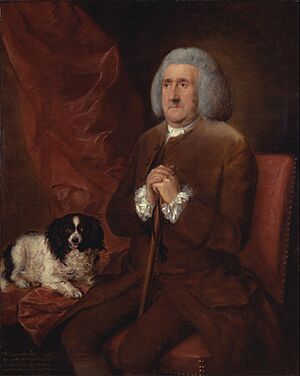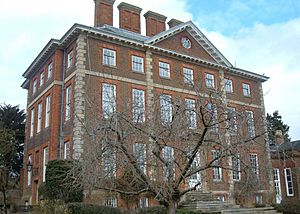William Lowndes (1652–1724) facts for kids

William Lowndes (born November 1, 1652 – died January 20, 1724) was an important English politician. He was a member of the Whig party, which was a political group in Britain. Lowndes served in the English and British Parliament from 1695 until his death in 1724. He also held a very important job as the Secretary to the Treasury, helping to manage the country's money during the reigns of King William III and Queen Anne.
Contents
Early Life and Education
William Lowndes was born in a town called Winslow, Buckinghamshire on November 1, 1652. His father was Robert Lowndes, and his mother was Elizabeth FitzWilliam. William went to school in Buckingham. After finishing school, he started working as a clerk at the HM Treasury, which is the government department that handles the country's money. He worked hard and eventually became quite successful. In 1687, he even bought a large property called Bury Manor in Chesham.
Political Journey and Achievements
Lowndes began his political career when he was elected to Parliament in 1695. He represented the town of Seaford in Sussex. He was so popular that he was elected without anyone running against him in every election until 1715. He became well-known across Britain as "Ways and Means Lowndes" because he was the chairman of the Committee of Ways and Means. This committee was very important for managing the government's money.
In 1695, Lowndes also became the Secretary to the Treasury. He wrote an important report about how to improve the country's silver coins during a time when there were problems with money. He became very rich because of his important roles in the Treasury. In 1700, he used some of his wealth to build a beautiful house called Winslow Hall in Winslow.
Famous artists painted portraits of Lowndes during this time. Sir Godfrey Kneller painted him twice, and another artist named Richard Philips also painted his portrait, which is now kept by the Bank of England.
Lowndes helped create a new way for the government to manage its money, which is called the "funded system." This system helped the government borrow money and manage its debts. Because of his great service, Queen Anne gave him a special job for life: Auditor of the Land Revenue. This meant he would oversee certain government income. She also added to his family's coat of arms as a sign of honor.
In 1712, Lowndes rebuilt the manor house called The Bury in Chesham. This building is still standing today and is used as an office.
After 1715, Lowndes continued his political career. He was elected as a Member of Parliament for St Mawes in Cornwall. Later, in 1722, he was elected for East Looe, also in Cornwall.
In 1723, Lowndes bought some land in London that he had been renting. Today, parts of London like Lowndes Square and Lowndes Street are named after him.
He is also famous for a saying: "Take care of the pence, and the pounds will take care of themselves." This means if you are careful with small amounts of money, the larger amounts will also be fine.
Death and Family Legacy
William Lowndes passed away on January 20, 1724. When his death was announced in Parliament, another important politician, Robert Walpole, said that the country had lost "a very useful Member, and the public as able and honest a servant as ever the Crown had." This shows how much he was respected.

Lowndes was married four times and had many children, 25 in total! His children and grandchildren also had large families.
His son, Richard, inherited Winslow Hall and also became a Member of Parliament. Another son, also named William, followed in his father's footsteps and became an Auditor of His Majesty's Court of Exchequer in the 1760s.
See also
- William Chaloner


